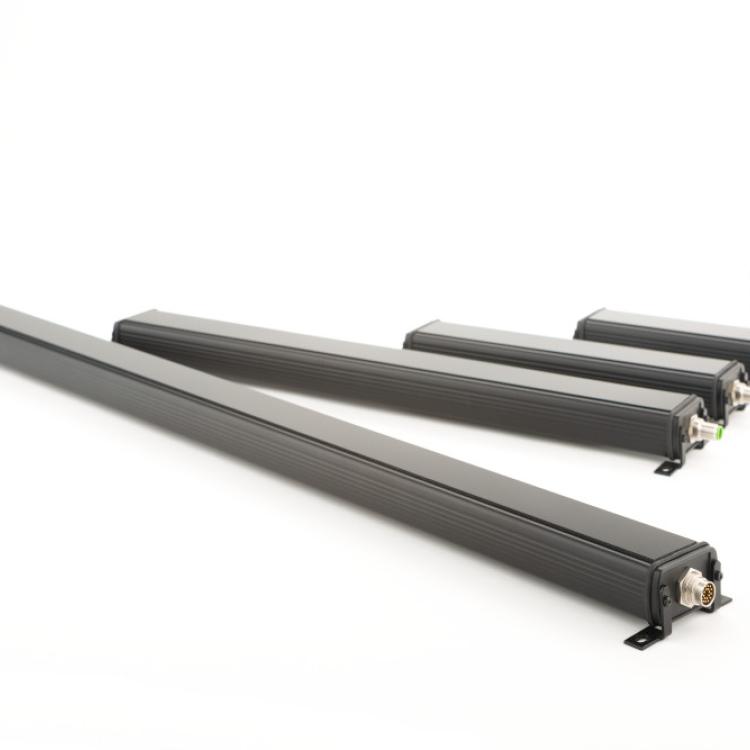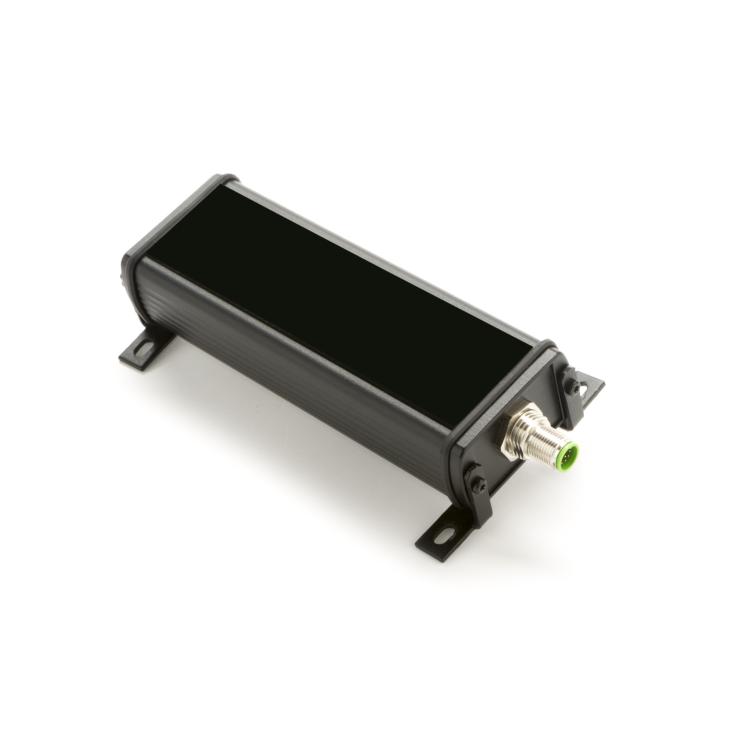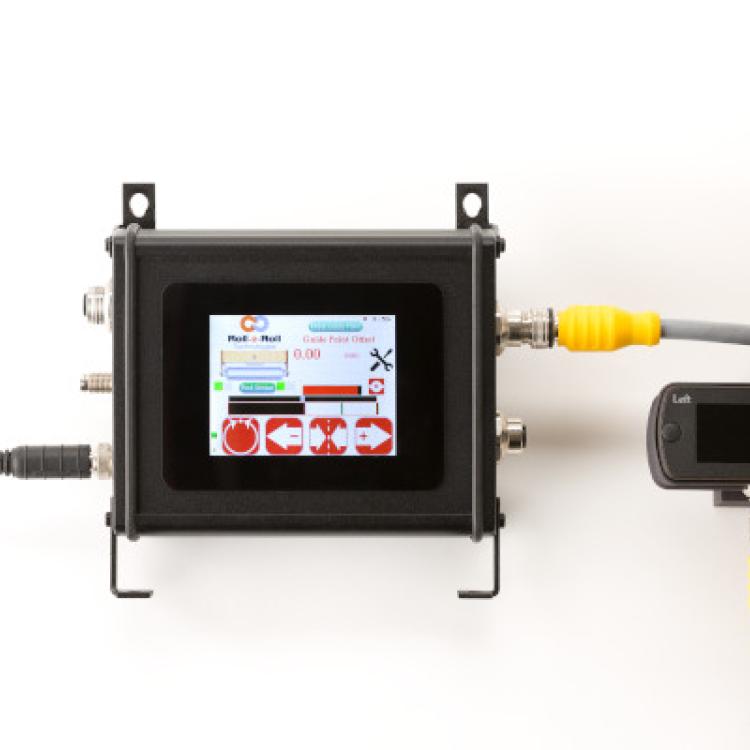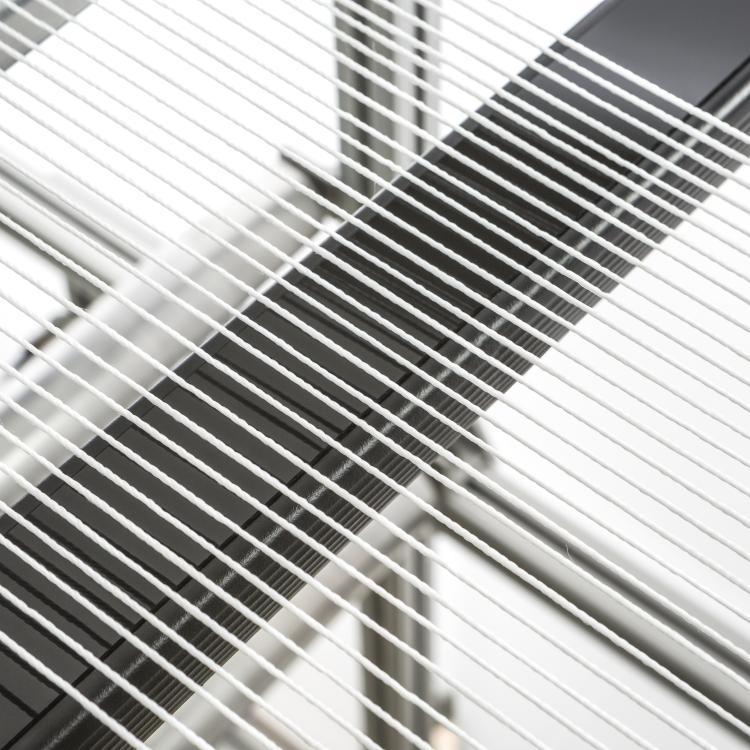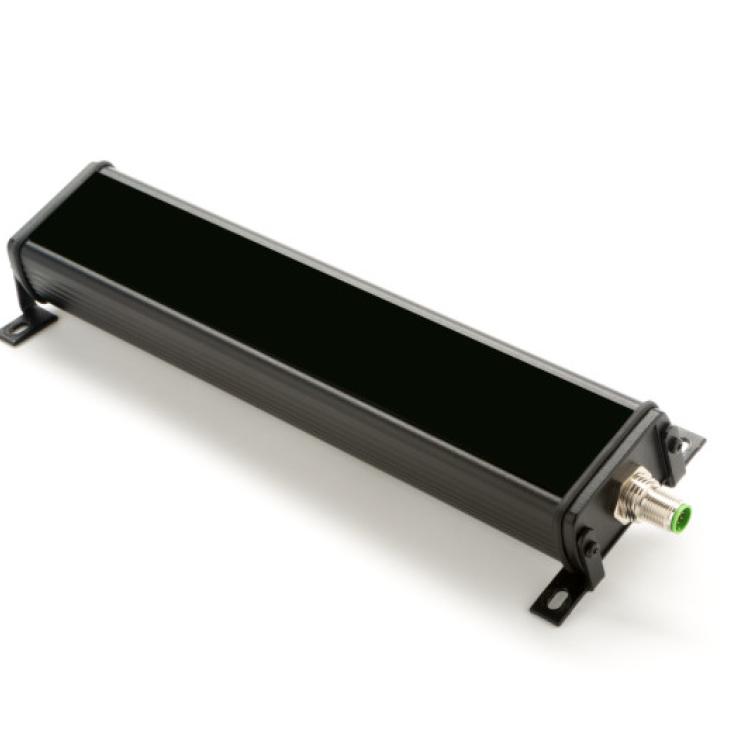Measure or monitor the web widths in your converting operation regardless of type or width of material. Single sensor application for webs up to 880 mm (34.6 in.) wide or two sensor applications for any web width providing measurement without the need to relocate sensors for most applications. Systems available with options for data recording, simultaneous web guiding, and multiple measurement and monitoring positions.
Roll-2-Roll® Sensors and Controllers can be combined to provide an accurate width measurement for quality or process control. This application can be used as a stand alone web width measurement system or as a combined web guiding / width measurement system when it is part of an intermediate or terminal web guiding system. When you require an accurate and affordable web width measuring system for process control, width deviation flagging, or quality assurance, our technologically advanced system provides you with a simple and reliable solution.
For use in any converting operation including, blown film, shrink label, thread and strip material processing, textiles, bag manufacturing, slitting, metal sheet processing, lumber.
Single Sensor Width Measurement Application
Single sensor width measurement allows for precise and accurate measurement of web width of any material without the need of repositioning the sensor. If the web is narrower than the sensor range, both edges of the web can be tracked with a single sensor. This application can be used for webs up to 880 mm (34.6 in.) wide with an appropriately wide sensor.
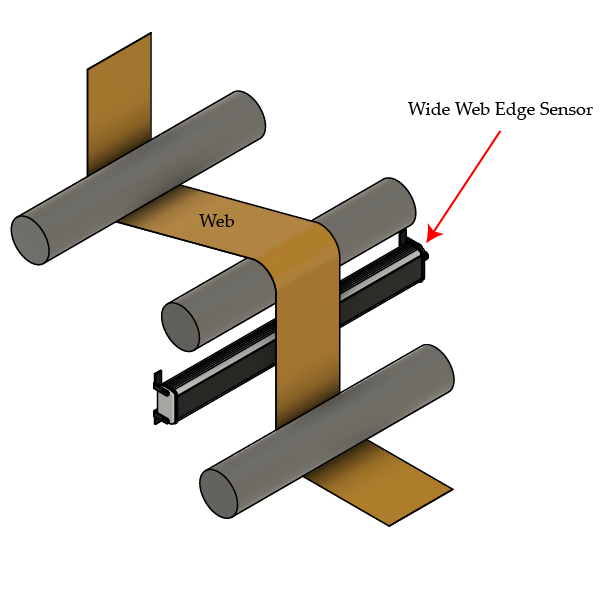
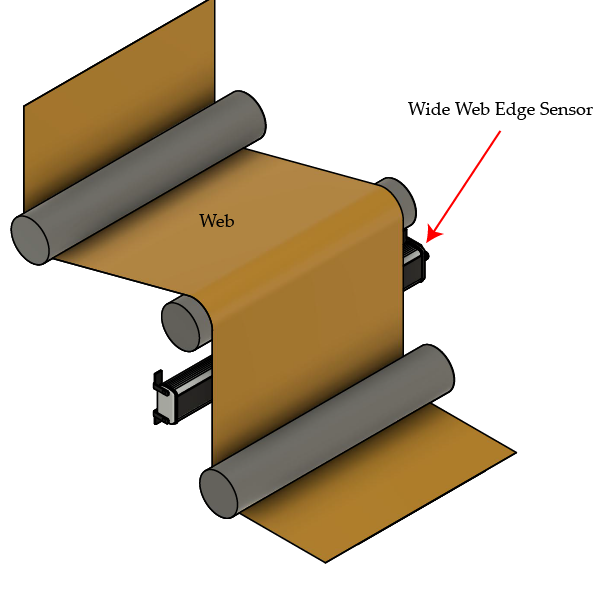
Equipment Required
- Roll-2-Roll® Sensor
- Roll-2-Roll® Controller (optional EtherNet/IP or PROFINET Communication)
| Sensor Model | Sensor Range |
|---|---|
| WPS 48 | 48 mm (1.88 in.) |
| WPS 112 | 112 mm (4.4 in.) |
| WPS 221 | 221 mm (8.7 in.) |
| WPS 440 | 440 mm (17.3 in.) |
| WPS 900 | 900 mm (35.4 in.) |
Operation
The controller features a dedicated operator screen for width measurement. The screen provides all the icons and digital output information necessary for setting up and monitoring of the measurement. The controller is capable of monitoring nominal width up to 9750 mm. Options to set nominal width and an upper and lower limit to trigger a fault signal are available. One-click teaching of the nominal width enables a speedy operation. The width output can be set to absolute or to error. When error output is selected the difference between the measured width and the nominal value is provided.
The width measurement application requires for the web to be in a stable position to provide accurate measurements. If the material moves out of the sensing window, the system stops measurement until the material is back within the sensing window.
Standard features of the application
- Metric readout of width on the operator interface screen on the controller
- Setup of nominal, lower and upper limit width measurement settings
- Error or absolute output type
System options include
- Operator interface screen output to a PLC
- Width data recording
- Lower or upper out of range flag to activate any type of defect warning device
Advantages
- Improved accuracy by eliminating inaccuracies in sensor repositioning mechanisms
- Reduce downtime by eliminating the need to reposition the sensors
- Increase system reliability and life with no moving parts for wear and tear
- Reduce changeover time with simple one-touch teaching
- Work with all types of materials
- Easy operator interface access allows quick set up
Contact our experts or your regional sales representative to provide a width measurement solution for your operation.
Two Sensor Width Measurement Application
A two sensor application is used when the web width is wider than the sensor range. One sensor for each edge is used to track the overall web width. The edge position measurement from each sensor along with their distance between them can be used to compute the overall web width. This application requires that each edge of the web is within the sensing window of the respective sensor. Hence if the sensor is not wide enough to accommodate the width change, the sensors need to be repositioned appropriately.
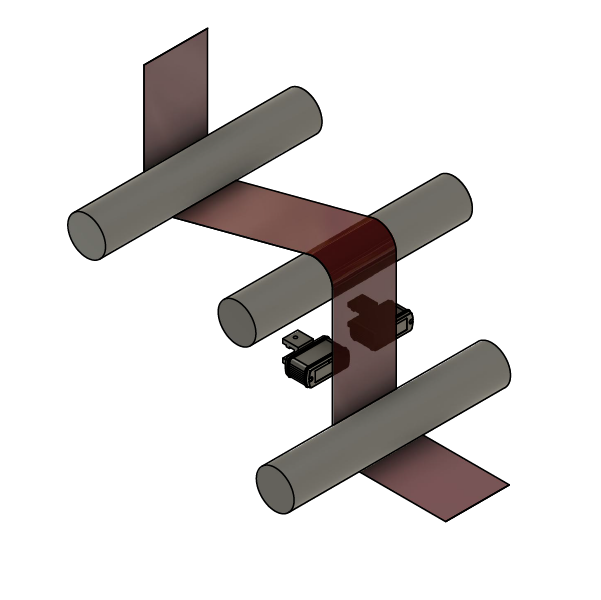
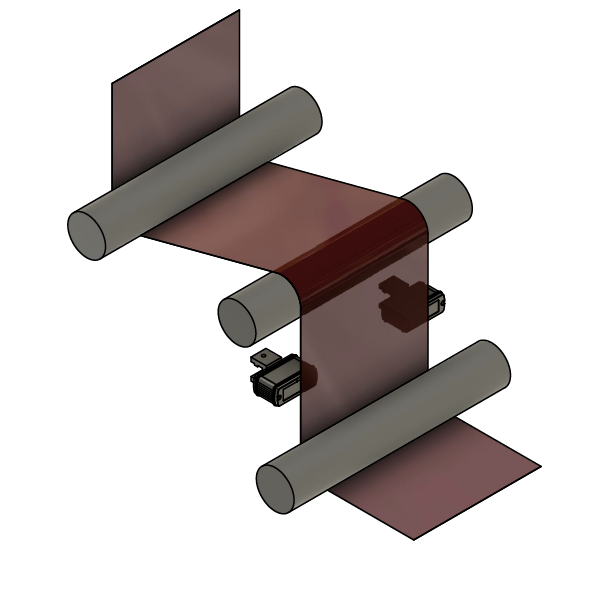
Wider width sensors can eliminate the need for repositioning of the sensors when your operation has web width changes in the processing line. Irrespective of the web width, if each sensor can see the respective edge, then web width can be measured without the need to reposition the sensors. Applications using wider sensing windows are a great cost effective option to an electromechanical sensor repositioning system. Additional elimination of any moving part in the width measurement system increases the reliability and life of the system since it eliminates mechanical wear and tear. It also provides a more accurate measurement system by the elimination of inaccurate mechanical components in the sensor repositioners.
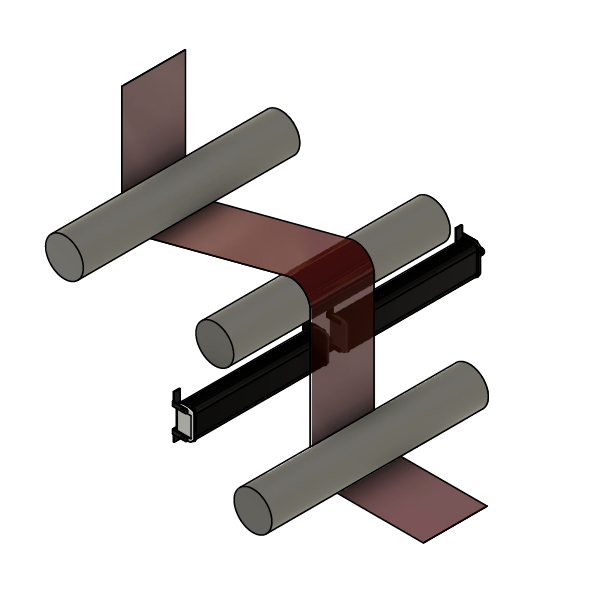
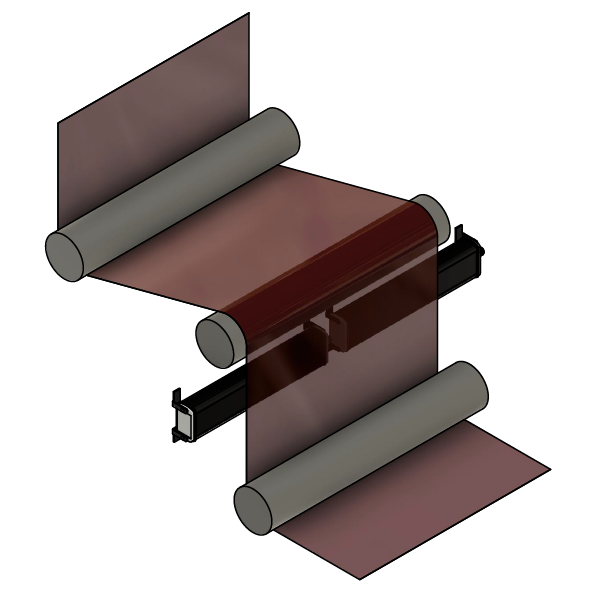
Equipment Required
- Two Roll-2-Roll® Sensor*
- Roll-2-Roll® Controller (optional EtherNet/IP or PROFINET Communication)
| Sensor Model | Sensor Range |
|---|---|
| WPS 48 | 80 mm (3.1 in.)* |
| WPS 112 | 200 mm (7.9 in.)* |
| WPS 221 | 420 mm (16.5 in.)* |
| WPS 440 | 860 mm (33.8 in.)* |
| WPS 900 | 1780 mm (70.0 in.)* |
* Dependent on the lateral displacement of the web present in the process.
Operation
The Roll-2-Roll® Controller features a dedicated operator screen for width measurement. The screen provides all the icons and digital output information necessary for setting up and monitoring of the measurement. The controller is capable of monitoring nominal widths up to 9750 mm. Options to set nominal width, an upper and lower limit to trigger fault signals are available. One-click teaching allows the controller to automatically determine the distance between the two sensors for speedy operation. All these operations can be set easily on the screen. The output can be set to absolute to give the width in mm or to error in which the display shows the difference between the measured width and the nominal value.
Standard features of the application
- Metric readout of width on the operator interface screen on the controller
- Setup of nominal, lower and upper limit width measurement settings
- Error or absolute output type
System options include
- Operator interface screen output to a PLC
- Width data recording
- Lower or Upper out of range flag to activate any type of defect warning device
Advantages
- Improve accuracy by eliminating physical sensor repositioning mechanisms
- Reduce downtime by eliminating the need to reposition the sensors
- Increase system reliability and life with no moving parts for wear and tear
- Reduce changeover time with simple one-touch teaching
- Work with all types of materials
- Measure widths based on web edge or a contrasting feature on the web
- Easy operator interface access allows quick set up
- Economical and more accurate option to replace electromechanical sensor repositioning systems
Contact our experts or your regional sales representative to provide a width measurement solution for your operation.
